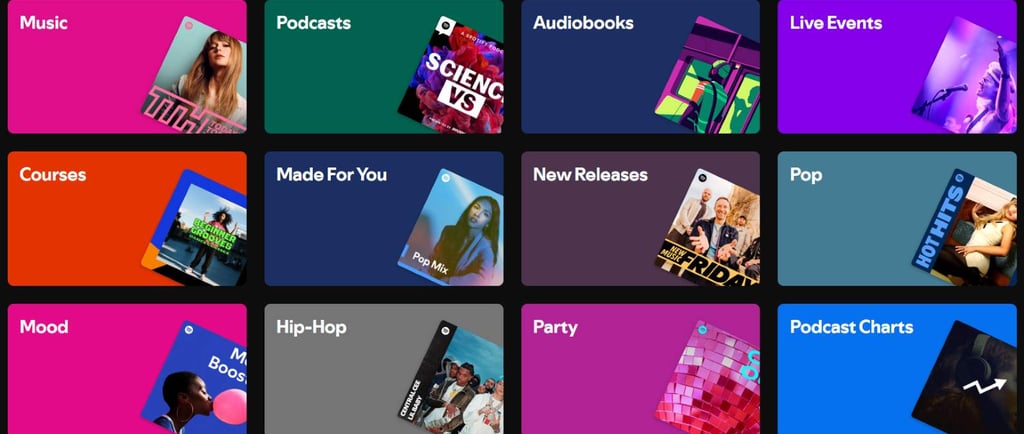5 Red Flags That Tell You a Playlist Is Using Bots (and Why Artists Should Avoid Them)
In recent years, the rise of fake playlists powered by bots has become a serious issue, not only misleading artists but also putting their careers at risk.
5/26/20253 min read


In the world of Spotify promotion, playlist placements can seem like the golden ticket to success. But behind the scenes, not every playlist is as genuine as it appears. In recent years, the rise of fake playlists powered by bots has become a serious issue, not only misleading artists but also putting their careers at risk.
If you’re an artist investing in playlisting to grow your streams and audience, spotting these fake, botted playlists is essential. In this article, we’ll uncover five key warning signs that a playlist is using fake streams and explain why associating with them can do more harm than good.
1. Unnatural Spike in Streams (With No Other Growth)
One of the most common red flags is an unusual spike in your Spotify streams that doesn’t match growth on other platforms. If your track suddenly jumps by thousands of streams overnight, but your monthly listeners barely increase and your social media engagement stays flat, it’s a sign that those streams might not be real.
Bots can inflate stream counts, but they don’t save songs, follow your artist profile, or engage with your content elsewhere. Real listeners leave traces, they follow you, add your track to their personal playlists, and check out your other songs. If none of that is happening, you may be dealing with a 'botted' playlist.
2. No Saves, No Followers, No Real Engagement
Spotify's algorithm values engagement metrics far more than raw stream counts. Tracks that perform well typically get saved to listeners’ libraries, added to personal playlists, and listened to repeatedly. If you notice that your track is getting streams but has almost no saves or adds, it's a strong indicator that the playlist is powered by fake listeners.
Even worse, playlists using bots often deliver streams that last only a few seconds, just enough to register as a play, but not enough to boost your track’s standing with Spotify. Over time, this poor engagement rate can actually damage your chances of getting on algorithmic playlists like Discover Weekly and Release Radar.
3. Generic or Suspicious Playlist Names
Another subtle but telling sign is the name and branding of the playlist itself. Botted playlists often have generic, keyword-stuffed titles like "Top Global Hits 2025" or "Massive Spotify Bangers", without any real curation or personality behind them. Many also lack proper descriptions or artwork, and some playlists may even use random stock images to appear legitimate.
If you can’t trace the curator to a social media account, website, or genuine Spotify profile with history, that’s a major red flag. Real curators build communities, while fake playlist operators hide in anonymity. Always check who’s behind the playlist before paying for a placement.
4. Playlists With Massive Followers but Poor Track Engagement
It’s easy to be lured by playlists boasting tens or even hundreds of thousands of followers. But big follower counts mean little if the actual track engagement is low. A genuine playlist with 10,000 followers could actually drive better results than a 'botted' one with 100,000 followers.
Look at the current tracks on the playlist: are they gaining streams, saves, and chart placements? Or are they flat, despite supposedly being on a huge playlist? If multiple artists report the same pattern (big promises, but no tangible growth), you’re likely looking at a playlist fuelled by bots.
5. Too-Good-to-Be-True Offers and Guaranteed Results
Finally, if a curator guarantees you a certain number of streams for a fixed price, that’s a classic warning sign. Real curators can’t predict exact stream counts because real listeners behave unpredictably. Only someone running a bot farm can offer precise numbers on command.
Be cautious of anybody promising “guaranteed” placements with thousands of streams, especially at suspiciously low prices.
Why Artists Should Avoid Fake Playlists at All Costs
At first glance, fake playlists may seem like an easy way to boost your numbers. But the risks far outweigh the rewards. Spotify’s detection systems are more advanced than ever in 2025, and artists caught using fake streams can face serious consequences: tracks being pulled down, algorithmic suppression, or even bans from future editorial opportunities.
Beyond Spotify’s rules, fake streams don’t build real fans. They won’t buy tickets, share your music, or support your career. In fact, artificially inflated numbers can make it harder to secure real opportunities, as industry professionals can spot the difference between genuine momentum and fake metrics.
How We Help Artists Avoid Bots at Music Mogul Marketing
At Music Mogul Marketing, we specialise in connecting artists with vetted, organic playlists that deliver real results, not empty numbers. Every playlist in our network undergoes thorough checks for engagement and authenticity. No bots, no fake followers, just real streams from real listeners who can become real fans.
If you are interested in submitting your music to our curators, complete this enquiry form, and we will reach out if any of our playlists align with your style.
Sitemap
Gateway House,
4 Penman Way,
Enderby,
Leicester
© 2025 Music Mogul Marketing | All rights reserved.
Contact Details


